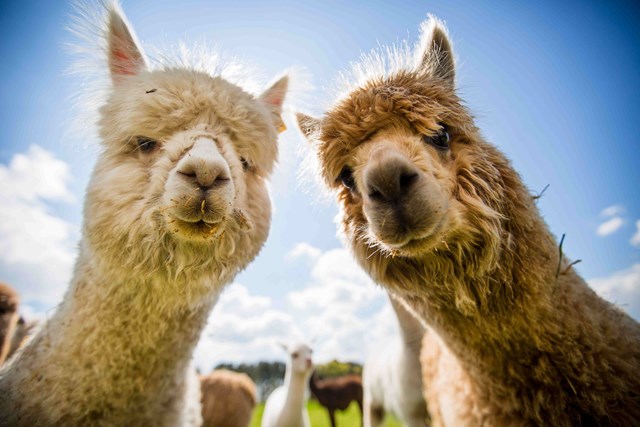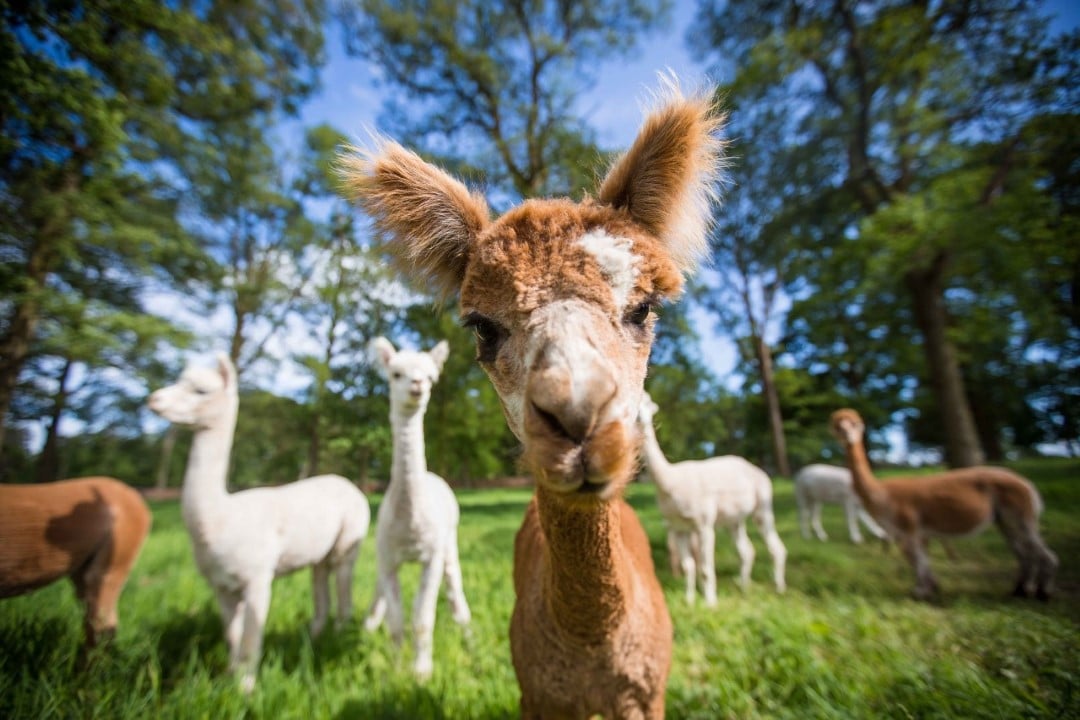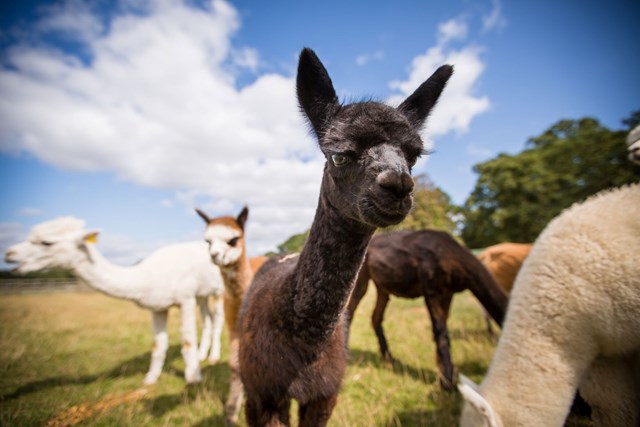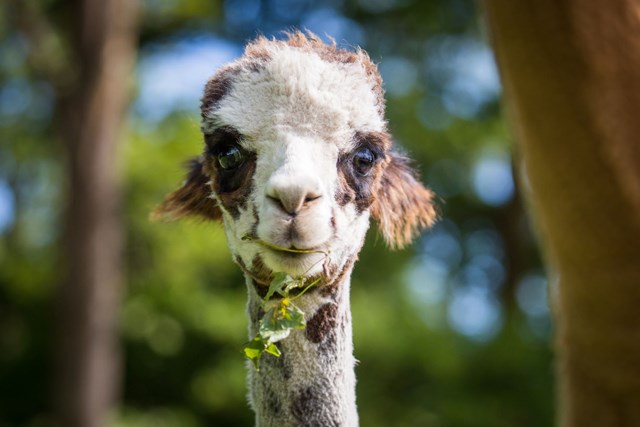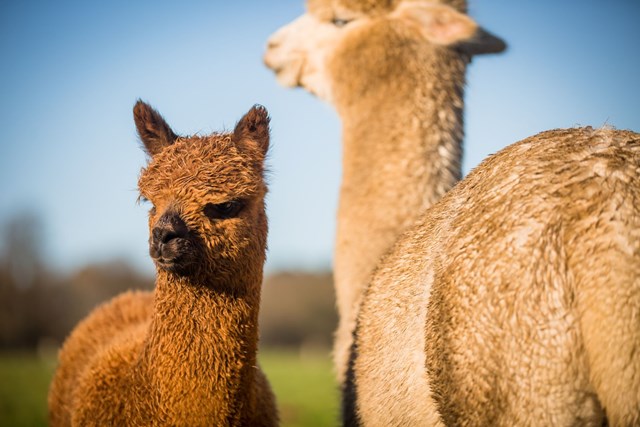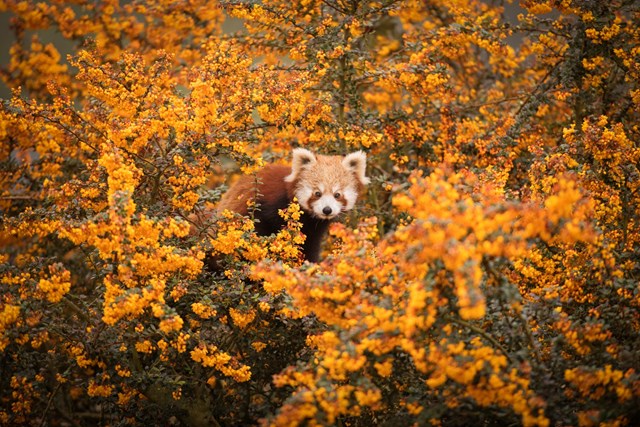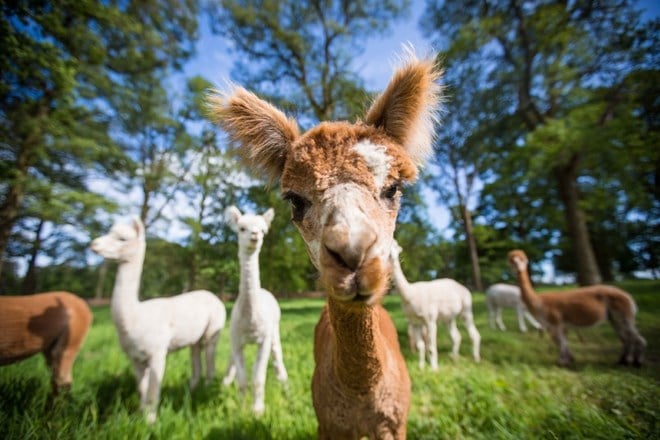
Overview
The alpaca is a South American camelid mammal that is often confused with the llama. While they are closely related, alpacas are noticeably smaller than llamas.
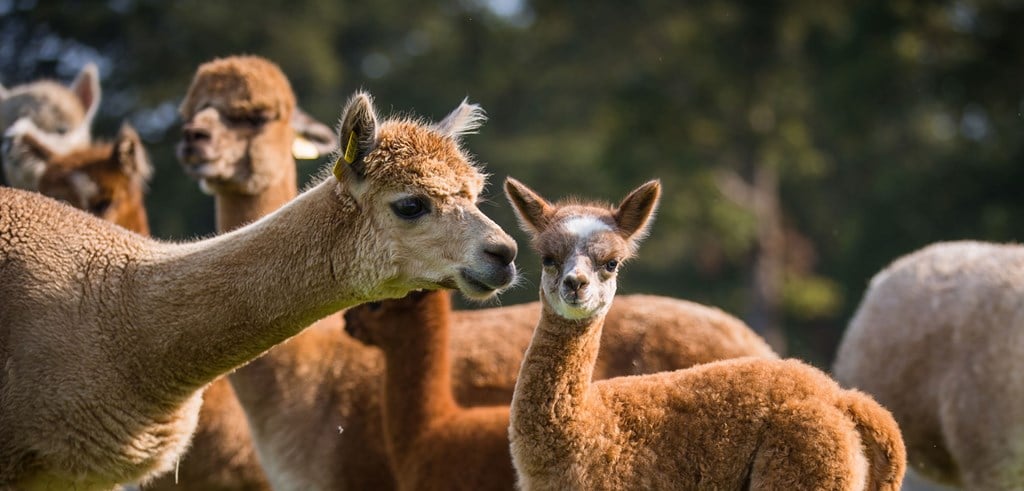
All about us
| Distribution: | Central and Southern Peru, Western Bolivia |
|---|---|
| Habitat: | Temperate mountain habitats |
| Height: | 81 - 99 cm |
| Weight: | 48 - 84 kg |
| Gestation Period: | 11 - 12 months |
| Lifespan: | 15 - 20 years |
Scientific name: Vicugna pacos
Woburn Safari Park is home to a large breeding herd of alpacas. Led by breeding male Amoro, the herd also includes Chewpacca and Alpacamybags, who were named in visitor competitions.

Alpaca facts
Alpacas are often confused with the llama. These slender-bodied animals have a long neck and legs, short tail, and large, pointed ears. Alpacas are covered in a soft fleece that can occur in a variety of colours, from black to shades of brown, fawn and tan. Their hair is called 'fleece' or 'fibre' instead of 'fur' or 'wool'.
Alpacas mainly eat grass but they will also eat leaves, wood, bark or stems. They have a three-chambered stomach that helps them to digest the roughage.
Alpacas are social animals that generally live in family groups, with an alpha male, females and their young.
Unlike many animals, alpacas do not have a breeding season. Instead the females can breed at any time of the year, it is the act of mating that causes them to ovulate.
Alpacas only have one baby, known as a cria, at a time. The baby is often born between late morning and mid-afternoon.
Females can breed from one year old, however males take longer to mature and are not ready to breed until between two and a half to three years old. Cria are weaned within eight months.
As alpacas are domesticated, their largest threat today is predators in the area that they are kept in. These predators can range from dogs to coyotes, wolves, bears and mountain lions.
